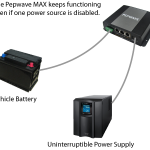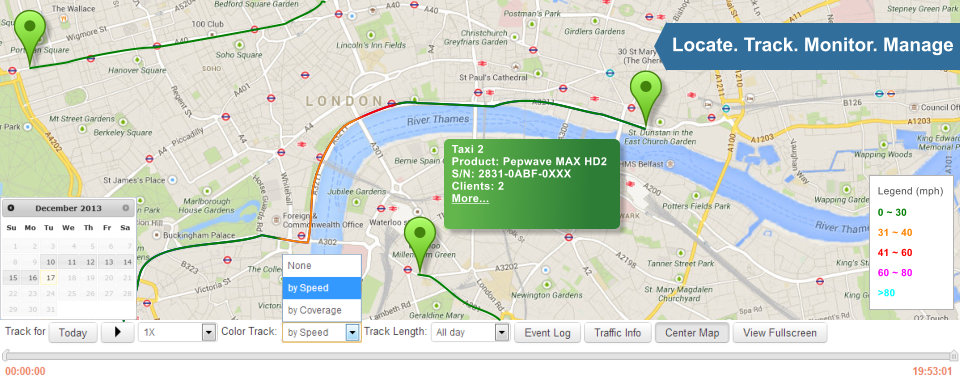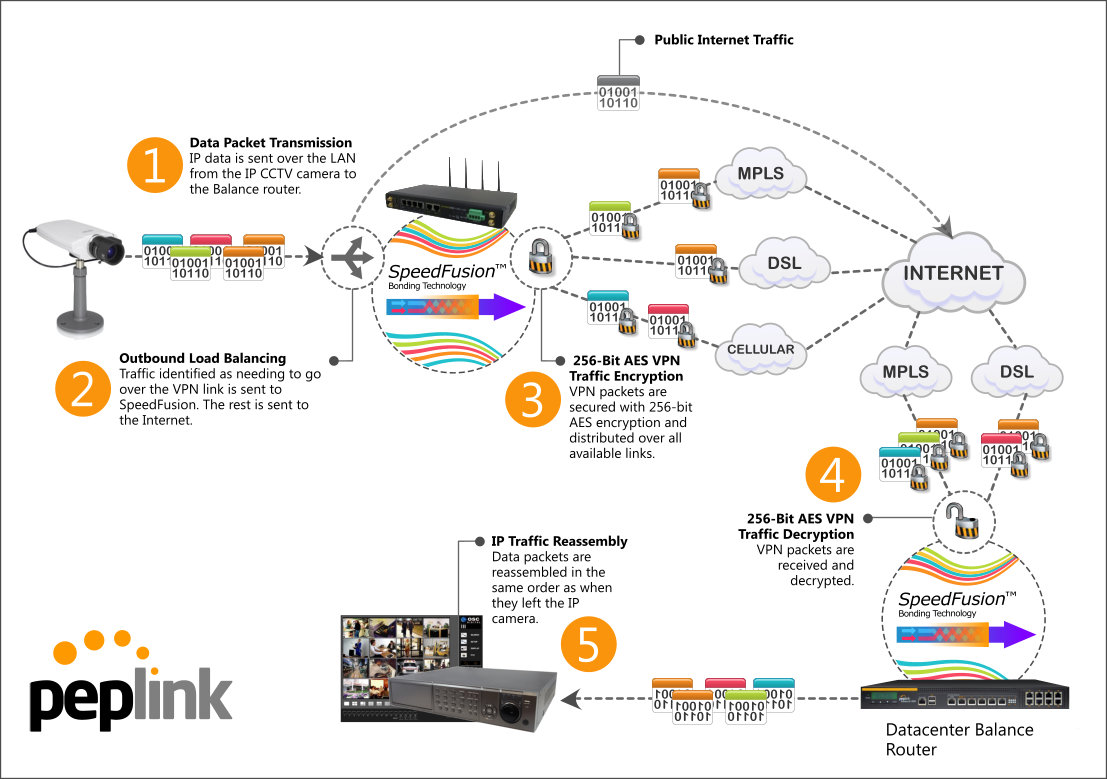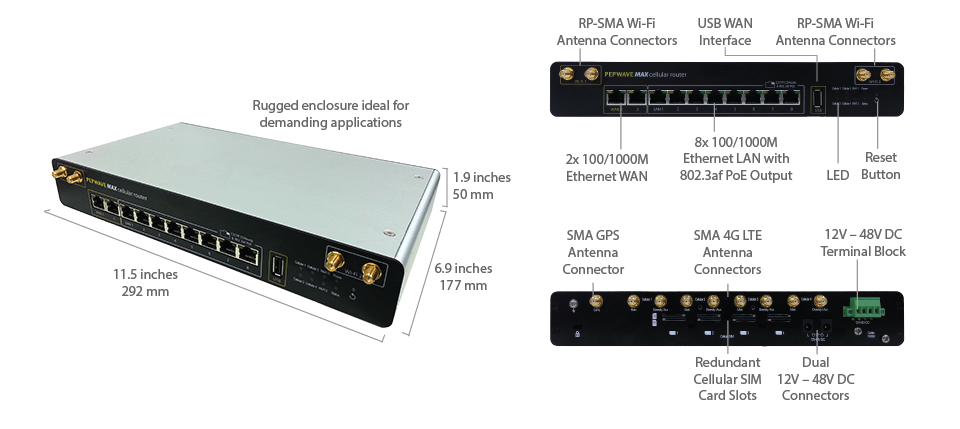I can’t give great examples here… although I want to.
We frequently work on projects at Peplink that we can’t talk about in public – projects involving government departments, big multi-nationals or security firms in particular tend to come with a bunch of non disclosure agreements attached for obvious reasons. Its a shame obviously as I would really like to shout about some of these projects as they are very clever and often on a massive scale.
What I can talk about though is the technology (since that’s ours) so long as I don’t reference the specific projects everyone will be happy.
UPDATE: Here is a great example of in vehicle CCTV I can now share http://www.peplink.com/solutions/case-studies/ferrari-group-case-study/
The Technology
So lets talk about – in very general terms, in vehicle CCTV and Fleet tracking and what Peplink brings to the table here. Firstly what demands do we see from the industry as a whole?
Reliable Connectivity
If you want to stream CCTV live from a vehicle when its mobile you need reliable connectivity. In the first instance you don’t want to be tied to a single cellular provider – since if they don’t have coverage where you are your video stops dead. At the very least you need a solution that supports two SIMs from different providers and can automatically swap between them when connectivity is lost.
Our entry level device is the BR1, which has a single embedded cellular modem supporting dual SIMs in an active/failover configuration. Its a small, ruggedized unit with an inbuilt WiFi AP and GPS too and comes in two flavours 3G or 4G/LTE.

Power Is Important
From the picture above you’ll notice that the BR1 can be powered in two distinct ways – either via the typical DC power connector (it comes with a standard mains power transformer – but for in car use you could use a 12V cigarette to DC plug adapter), or via the green power block which has screw terminals on the front.
 Importantly – and I’m not sure if this is unique to our devices or not, you can use both the power block and the DC connector at the same time providing alternate sources of power. For in vehicle installs that really need the BR1 to stay powered – even when the engine is off, you can add a second service battery or a UPS to keep the router online.
Importantly – and I’m not sure if this is unique to our devices or not, you can use both the power block and the DC connector at the same time providing alternate sources of power. For in vehicle installs that really need the BR1 to stay powered – even when the engine is off, you can add a second service battery or a UPS to keep the router online.
Load Balancing, Bonding and Hot Failover
Although a BR1 with its dual SIMs provides fail-over between cellular networks on the move, during fail-over the modem needs to reset to change Sims and so connectivity is briefly lost. In many instances a brief outage as SIMs are changed is acceptable, but for other projects the specification might well state a need to maintain connectivity as close to 100% of the time as possible. For those situations there are three approaches to consider:
- Load Balancing
Where Multiple WAN Connections can used at the same time by multiple sessions that are distributed across the available WAN Links. - Bonding
A VPN Based Technology between two or more of our devices (ie a HD2 in a vehicle and a Balance 580 in a datacenter). Sessions are split up at a packet level and distributed across the available WAN Links. If a WAN link fails the session is maintained. - Hot Failover
Another VPN based Technology between two or more of our devices. Using the capabilities of bonding but favouring the primary connection of choice for all traffic. If the primary link fails the next priority link is used and traffic is redirected at a packet level maintaining the original session even on WAN link failure.
Load Balancing is great but not perfect
Although great for vehicle based public WiFi access, load balancing isn’t always the best fit for in vehicle CCTV Applications. The reason is that a single video stream from a single camera will only ever use a single IP session and since load balancing works at a session level, the camera stream will only be able to use a single WAN link at any one time. So if the cellular coverage fails for that WAN link, the video will freeze or stop completely until a new session is created over another available WAN Link. Also the video stream will be limited by the bandwidth availability of that single WAN link, so as the vehicle moves out of coverage of that provider and the signal degrades – so will the video stream, until it finally disconnects completely and the streams session is moved to another available link.
More Session Bandwith and better reliability with VPN Bonding
With Speedfusion VPN Bonding a lot of the limitations of session based load balancing are removed. VPN Bonding allows a single session from a single video camera to be distributed at a packet level across all available links. The session is deconstructed in the vehicle, transmitted over the VPN to the remote Peplink device and reconstructed. Like this:
In so doing SpeedFusion can offer nearly all of the available bandwidth from all available cellular connections to be used by a single video stream/session, and since it works at a packet level, when a cellular WAN link fails, the session is maintained and data is rerouted over the other available links.
Hot Failover
SpeedFusion Hot Failover uses the same underlying VPN Bonding technology as above but works on a WAN Priority basis. Consider a scenario where you have a primary cellular contract with unlimited bandwidth availability and you have a second cellular provider that for cost reasons has a bandwidth cap. You would want the video stream to favour the first connection, but if that was unavailable use the second, but then fall back to the first as soon as it comes back up.
Now on the surface this sounds like load balancing (with the Priority Algorithm in play) but the difference here is that unlike load balancing, the session can be redirected over the second WAN link when needed at a packet level, meaning the session is not disconnected on failover.
The Need for Bandwidth
I’ve touched briefly on this in VPN bonding above where by using VPN bonding a single video stream/session can consume nearly all of the available bandwidth across multiple cellular connections.
As the requirement for bandwidth grows in vehicles for Public Wifi access, CCTV, ticketing machines, onboard marketing screens and the such like, so does the need for multiple cellular connections. Our flagship cellular router currently is the MAX HD4. It has four embedded 4G/LTE cellular modems supporting up to 8 SIMs (two per modem in active/standby).
With 3G/LTE averaging between 12-20Mbps in urban locations an HD4 could potentially provide access to 48-80Mbps (depending on location and the providers used) and that’s a lot more bandwidth than most people need in these kind of deployments. In fact, although the additional bandwidth is a draw, most people considering the HD4 are looking at the additional reliability 4 cellular modems and 8 SIMS from different mobile service providers can bring to their project.
Another area bandwidth can be required is in the depots or garages. A lot of vehicle based CCTV systems will have an on-board DVR that records all camera streams at the highest possible frame rates and resolutions – much higher than they would ever want to transmit live due to bandwidth costs. These recordings are sometimes dumped from the vehicles when they get back to the depots and archived.
Wifi as WAN
All of the BR and MAX cellular router products support the use of WiFi as a WAN link and this is great way to create a high bandwidth link on demand as the vehicles comes back to base. We also have customers using metro wifi networks as a WAN link whilst their vehicles are on the move, giving them high bandwidth connectivity prioritising WiFi first and cellular second.
Fleet Management
 All of the MAX and BR routers come with inbuilt GPS too, which when combined with our InControl 2 cloud based monitoring and management application, allows you to track and monitor your vehicles and routers – wherever they might be. Not only can can see where the vehicles on the map live, you can also see a full history of where they have been and the speeds they have been going at – with the ability to play back journeys in real time.
All of the MAX and BR routers come with inbuilt GPS too, which when combined with our InControl 2 cloud based monitoring and management application, allows you to track and monitor your vehicles and routers – wherever they might be. Not only can can see where the vehicles on the map live, you can also see a full history of where they have been and the speeds they have been going at – with the ability to play back journeys in real time.
As well as fleet management, InControl provides in depth bandwidth monitoring too so you can get a breakdown of the bandwidth used across your entire fleet for capacity planning and to spot any abuse of the system.
InControl also helps maintain and manage your router estate as you deploy more and more devices – reducing the management and support overhead of wifi settings, firmware updates and SpeedFusion VPN configuration by allowing for the centralisation of configurations for all aspects of the solution and then providing the ability to push updates and changes automatically.
In Conclusion
As you can see, the combination of multi cellular routers with intelligent WAN management, VPN bonding and centralised management and reporting offers a complete solution for all in vehicle internet connectivity needs. Its elegant, versatile and malleable to nearly all vehicle mounted scenarios, with devices designed for small taxis and motorbikes right up to the largest of public transport vehicles.
To find out more you can visit the main Peplink website, contact a local Peplink partner, or get in touch with me directly.




